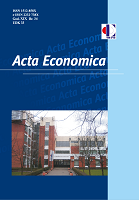
SME CREDIT RISK MODELLING IN SOUTH AFRICA: A CASE STUDY
SME CREDIT RISK MODELLING IN SOUTH AFRICA: A CASE STUDY
Keywords: SME scorecard; consumer credit; reject inference; credit scoring;
This paper examined the funding conundrum by assessing the success rate of applications of small and medium sized enterprises (SME) for commercial bank funding. A quantitative group analysis was done on the overdraft obtained from one of the leading financial institutions in South Africa to determine the drivers of default. The SME scorecard was developed using logistic regression on credit applications over a seven-year observation period to analyse the default experience as part of credit risk management. The robustness, stability and relevance of an application scorecard is enhanced by the reject inference process and inclusion of bureau information. Small businesses operating in the service sector and having a long-standing rapport with the bank can easily access commercial bank funding. SMEs in the construction industry with a high number of credit enquiries are unlikely to survive the stringent conditions of the bank lending criteria. It is the prerogative of the principal business owner to honour their financial obligations across the credit industry if commercial bank funding is desired. Their credit quality, as reflected in the bureau information, forms the fulcrum of the SME application scorecard. The model developed in this study can be used as a tool to reduce defaults and serious delinquencies in boarding new applicants. Furthermore, the model can be applied to determine risk tendency and monitor the performance of SME credit portfolios.
More...
